|
|
|
| Published
on 27
Jul
2004 |
All rights reserved.
|
|
|
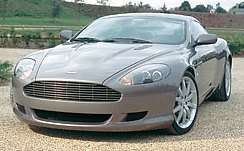 DB7
was Aston Martin's most commercially successful car in history. It was
born in 1994, developed by TWR on behalf of Aston from a modified
Jaguar
XJS platform. Continuous development, including the addition of V12
engine
in 1999, kept orders flowing in. Eventually, some 7,000 DB7s were
produced.
Its success kept Aston Martin alive and paved the way for a new golden
era. DB7
was Aston Martin's most commercially successful car in history. It was
born in 1994, developed by TWR on behalf of Aston from a modified
Jaguar
XJS platform. Continuous development, including the addition of V12
engine
in 1999, kept orders flowing in. Eventually, some 7,000 DB7s were
produced.
Its success kept Aston Martin alive and paved the way for a new golden
era.
Aston
Martin was
bought by
Ford since as early as 1987, but it was left very much ignored until
recently.
Now Ford has big plan for the British premium sports car maker. It
wants
to push its sales from today's 1,500 cars a year to 8,000 cars a year.
This consists of a few hundred units of Vanquish, 2,000-2,500 units of
DB9 and 5,000 units of V8 Vantage. The price structure of the 3 cars
will
be £160,000, £100,000 and £70,000 respectively. To
work
this out, Ford installed ex-Porsche engineer Ulrich Bez to head the
company,
invested enormous money into a modern factory and employed Henrik
Fisker
as dedicated designer. By the way, the latter was best known for
designing
BMW Z8.
For a
company
targeting at
producing 8,000 cars a year, it is impossible to develop 3 separate
platforms.
Therefore the solution is to use a common platform called VH - stands
for
Vertical and Horizontal - for the DB9, V8 Vantage and the next
generation
Vanquish. The platform employs aluminum bonded frame chassis and is
flexible
enough to extend in vertical and horizontal directions to accommodate
the
trio. They will also share a transaxle gearbox mounted at the rear axle
for 50:50 weight distribution, and in the case of DB9 and Vanquish, a
common
V12 engine with different state of tune. This allows Aston to have 3
cars
out of relatively little additional cost.
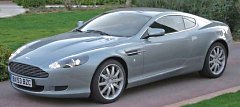 The
chassis of DB9 consists of mostly extruded aluminum bonded by rivets
and
adhesive like Lotus Elise. Compare with Vanquish, it saves cost by
using
cast aluminum transmission tunnel instead of carbon fiber one.
Magnesium
are extensively used, such as door frames, door inner panels and
steering
column mounting while the all-round double-wishbones suspensions are
made
of forged aluminum. The body panels are partly aluminum and partly
plastic
composites. As a result, DB9 tips the scale at 1710 kg for the 6-speed
manual gearbox version (6-speed ZF automatic adds 50kg). This means a
saving
of 70kg from its predecessor. While this seems not much, in terms of
stiffness
the aluminum chassis is definitely in a different league. Aston did not
give any rigidity figures, but from road testers' observation it is
immensely
rock solid, letting the suspension to concentrate on providing accurate
control. The
chassis of DB9 consists of mostly extruded aluminum bonded by rivets
and
adhesive like Lotus Elise. Compare with Vanquish, it saves cost by
using
cast aluminum transmission tunnel instead of carbon fiber one.
Magnesium
are extensively used, such as door frames, door inner panels and
steering
column mounting while the all-round double-wishbones suspensions are
made
of forged aluminum. The body panels are partly aluminum and partly
plastic
composites. As a result, DB9 tips the scale at 1710 kg for the 6-speed
manual gearbox version (6-speed ZF automatic adds 50kg). This means a
saving
of 70kg from its predecessor. While this seems not much, in terms of
stiffness
the aluminum chassis is definitely in a different league. Aston did not
give any rigidity figures, but from road testers' observation it is
immensely
rock solid, letting the suspension to concentrate on providing accurate
control.
Like
its
predecessor, DB9
is strictly a 2+2. A combination of low roof, steeply raked windscreen
and rear window limits headroom for the front passengers. At the back,
despite of a wheelbase gain of 150mm, it is still more suitable for
luggage
rather than human. The DB9 was styled by Henrik Fisker but its general
shape evolves from Ian Callum's Vanquish. From some angles it is very
difficult
to distinguish the two. However, good observers will notice the car has
softer lines and surfaces to reflect its more civilized character,
although
drag coefficient is the same 0.35.
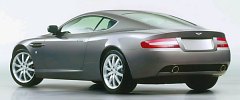 A
comparison with its rival Ferrari 612 Scaglietti is interesting.
Although
they were launched in the same year, both have aluminum construction
and
a V12 engine, they are very different in character - the Aston's shape
is powerful and purposeful, obviously more beautiful than the
disappointing
Pininfarina design. However, while you expect Aston to be more comfort
biased, it is the Ferrari that actually delivers real comfort, no
matter
in ride quality or cabin space (it's a true 4-seater). We shall see
later… A
comparison with its rival Ferrari 612 Scaglietti is interesting.
Although
they were launched in the same year, both have aluminum construction
and
a V12 engine, they are very different in character - the Aston's shape
is powerful and purposeful, obviously more beautiful than the
disappointing
Pininfarina design. However, while you expect Aston to be more comfort
biased, it is the Ferrari that actually delivers real comfort, no
matter
in ride quality or cabin space (it's a true 4-seater). We shall see
later…
DB9's
5935cc V12
is an improved
version of DB7's unit. A lighter crankshaft and other components reduce
12kg while pushing power by 30hp. However, compare with 612 Scaglietti
it is by no means powerful. The Ferrari V12 can rev to a sky-high
7250rpm
and produces 540 horsepower there. In contrast, the Aston V12 is no
where
as revvy. It generates just 450 horsepower at a relatively leisure
6000rpm.
Lack of variable valve timing and variable intake is one reason, but
the
main cause lies on its bloodline - the Aston V12 was originally
constructed
by mating a pair of Ford Duratec V6 powering your everyday Taurus.
That's
not a good starting point for a supercar engine.
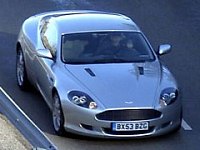 Aston
claims a top speed of 186mph (300km/h) and 0-60mph in 4.7 seconds. In
practice,
performance figures vary a lot from test to test. We take the best
selling
6-speed ZF auto as example. Autocar once recorded 5.4 sec in its formal
road test in UK, but in other occasions it did 5.1 sec and even 4.8
sec.
Car & Driver was faster still, taking just 4.5 seconds. However,
0-100mph
are more consistent, ranging from 10.1 sec, 10.2 sec (both Autocar),
10.3
sec (C&D) and 11.3 sec (again Autocar). Getting rid of the slowest
one and taking the average, we can say it normally takes just under 5
seconds
for 0-60mph and just over 10 seconds for 0-100mph. This means it falls
some way behind arch-rivals such as Ferrari 612 Scaglietti and 575M,
Mercedes
SL600 and of course, the superpower SL65AMG. Aston
claims a top speed of 186mph (300km/h) and 0-60mph in 4.7 seconds. In
practice,
performance figures vary a lot from test to test. We take the best
selling
6-speed ZF auto as example. Autocar once recorded 5.4 sec in its formal
road test in UK, but in other occasions it did 5.1 sec and even 4.8
sec.
Car & Driver was faster still, taking just 4.5 seconds. However,
0-100mph
are more consistent, ranging from 10.1 sec, 10.2 sec (both Autocar),
10.3
sec (C&D) and 11.3 sec (again Autocar). Getting rid of the slowest
one and taking the average, we can say it normally takes just under 5
seconds
for 0-60mph and just over 10 seconds for 0-100mph. This means it falls
some way behind arch-rivals such as Ferrari 612 Scaglietti and 575M,
Mercedes
SL600 and of course, the superpower SL65AMG.
However,
the
Aston is very
strong in handling. Its adequate size - smaller and lighter than
Ferrari
612 - and its remarkable chassis stiffness make it feel sharp and agile
in the twisty. A combination of 50:50 weight distribution and low polar
moment of inertia (like the Ferrari, 85% mass within the wheelbase)
enables
great balance and stability in corners. The springing is stiff and
damping
is good, reducing body movement to minimal. But the ride is very taut,
even harsh by the standard of Grand Tourers. Lack of adaptive damping
might
be an excuse, but a Porsche 996 always go well without adaptive
damping.
Strangely, this Aston is supposed to be the most civilized one in the
trio,
but actually it does not want to compromise. Hardcore drivers will
praise
the accuracy of its steering and the heaviness of steering and brake
pedal.
Others may differ. One thing is not in doubt: its V12 is smooth and
roars
beautifully.
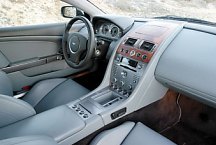 Open
the door, the cabin is a revelation! while DB7 had one of the poorest
finishing
cabins in premium sports cars field, the DB9 received a lot of care and
attention to make sure it is worth spending the money. At the first
glance,
the cockpit is fully bespoke, without any visual link with a mass
production
Ford, Jaguar, Volvo or the like. The instrument panel is made of
brushed
alloy, as is the control area of the center console. Above which is a
single
big piece of wood, very classy. The doors are trimmed with leather,
wood
inserts and alloy handles. Even the switch gears reflect a high level
of
attention to details. Therefore, although space is fairly confined, the
Aston's cabin will put a proud smile on its owner's face. Open
the door, the cabin is a revelation! while DB7 had one of the poorest
finishing
cabins in premium sports cars field, the DB9 received a lot of care and
attention to make sure it is worth spending the money. At the first
glance,
the cockpit is fully bespoke, without any visual link with a mass
production
Ford, Jaguar, Volvo or the like. The instrument panel is made of
brushed
alloy, as is the control area of the center console. Above which is a
single
big piece of wood, very classy. The doors are trimmed with leather,
wood
inserts and alloy handles. Even the switch gears reflect a high level
of
attention to details. Therefore, although space is fairly confined, the
Aston's cabin will put a proud smile on its owner's face.
Undoubtedly,
DB9
is a well
finished product. What a pity its market positioning is embarrassing -
being a Grand Tourer, its cockpit is too cramped and the suspension
setting
is too hard; being a super sports car, it is not fast and swift enough.
However, I am really glad to see Aston Martin dare to be different.
While
everybody else - including Ferrari - is going soft and easy, it is not
a bad thing to have a more hardcore GT to choose from.
|
Verdict:     |
| Published
on 24
Oct 2012 |
All rights reserved.
|
|
DB9 Mk2
|
|
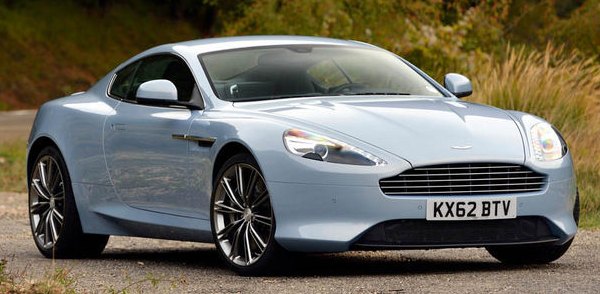
|
Even its loyal admirers
would admit Aston Martin's
product strategy has been a mess in the past few years. The string of
V12
models, namely DB9, DBS and V12 Vantage, are so close to each other
that their co-existence was hardly necessary. To make things even
worse, Virage was slotted in the narrow gap between DB9 and DBS early
last year. At that time, I predicted the Virage would eventually take
over the aging DB9 as the company's mass selling V12 model. Somehow, it
turned out to be the contrary: it was terminated after only 18 months
and 1100 copies built. Replacing it is the second generation DB9 which
you are seeing here.
Well, my prediction is not at all wrong. In fact, the new DB9 is more
or less a lightly modified Virage. This observation is especially
obvious from its looks – apart from the more pronounced boot lid
spoiler, the new car shares all body panels with the Virage. Even the
small details like grilles, lights and air intakes are exactly the
same. Inside the cabin, even the sharpest eyes fail to spot the
difference – because there is none. Apparently, the name Virage was
proved to be unpopular (think of the first generation!), so Aston
decided to rename it to the more popular DB9. This makes sense because
they were occupying much the same market place already.
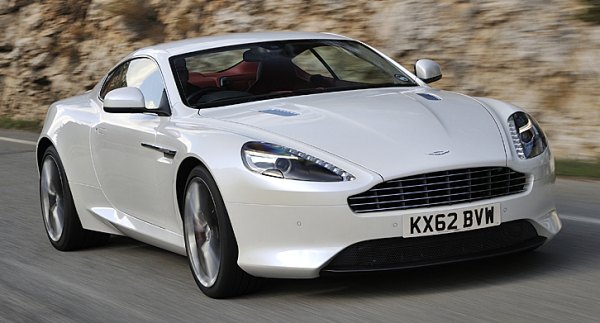
|
Now with the new DB9 and new Vanquish, Aston Martin has a
much healthier model structure – the V8 Vantage starts from
£85,000, the DB9 sells for £132,000 and the Vanquish tops
at £190,000. Each model is given enough breathing space. (The V12
Vantage is still a bit confusing at £135,000, but it is supposed
to have a different, sportier character than the DB9) Compare with the
outgoing Virage, the new DB9 represents better value for money as it is
£18,000 cheaper yet it gets the same ceramic brakes and adaptive
damping as standard equipment.
In my eyes, the Virage was a beautiful design, although its tail could
look a little too soft and civilized. Now with the extra boot lid
spoiler its only problem is fixed. I doubt any GT could look better
than this one, not even the new Vanquish. Maserati GranTurismo might
come close to match its beauty, but they clearly come from different
schools – one is a princess and another is a sexy star. The way the
Aston Martin combines purity and subtleness to the best visual effect
is amazing.
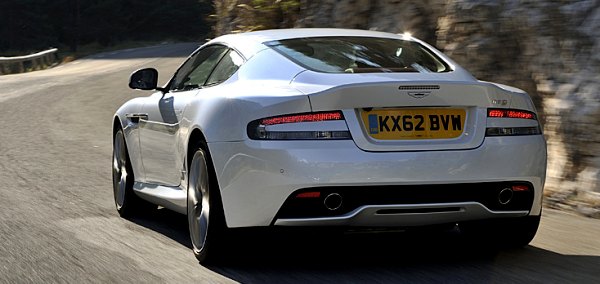 |
My report could stop here if the DB9 was only a renamed
Virage. Fortunately, it gets some adequate updates, most notable of
which is a V12 similar to the one fitted to the new Vanquish. It gets
variable valve timing on intake and exhaust valves and a higher, 11:1
compression ratio, among others, to lift its output to 517 hp and 457
lbft. That's 20 hp and 37 lbft more than Virage, though not as highly
tuned as the flagship Vanquish. There is a bit more torque at lower rev
to improve tractability. Meanwhile, the engine is mounted 19 mm lower
in the chassis like the Vanquish. This allows the DB9 to comply with
pedestrian safety law while enabling a
stronger delta brace to be added above the engine to reinforce the
chassis. As a result, torsional rigidity is said to be 20 percent
higher than that of the old DB9. That's for the coupe. For Volante
roadster, the improvement is even more remarkable at 30 percent. These
changes attribute to the so-called 4th generation VH platform.
The rest of the package is about the same as Virage. As mentioned
before, the DB9 is benefited from the Virage's Brembo carbon-ceramic
brakes to enhance stopping power while reducing unsprung weight. The
new 3-stage adaptive damping system also improves ride quality and body
control. Less encouraging is the compulsory use of 6-speed ZF automatic
transaxle. These days Aston Martin no longer offers manual gearbox.
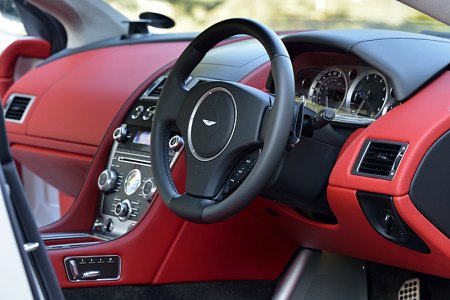
|
As you can see, the DB9 shares basically the same chassis,
powertrain and suspensions with Vanquish. It only lacks the latter's
carbon-fiber body, carbon-fiber chassis parts and new interior. While
its V12 is not as highly tuned, it provides the same flexibility and
delicious noise. Its performance won't shock you, with 0-60 mph claimed
at 4.4 seconds, but it is adequate for a GT. The 6-speed automatic
gearbox serves the DB9 better than the Vanquish because its civilized
manner suits the former. That said, it would be even better if Aston
can upgrade to ZF 8-speed auto like Bentley Continental GT in the
future, because that would bring quicker response and lower fuel
consumption.
On the road, the increased chassis rigidity is evident as the DB9 rides
with more compliance and less noise. The adaptive damping, whose
setting in each of the 3 positions is softer than that of Virage and
Vanquish, also helps to deliver a smooth ride. Meanwhile, the handling,
steering and braking are all very competent. With a balanced chassis
and communicative steering, the DB9 feels sportier and more inspiring
to drive than its Bentley rival. Its powerful yet linear braking
provides you the confidence to push it harder. While it does not set
any new standards on performance, body control or grip, all ingredients
come together so well that you can have a great deal of confidence to
exploit the car on challenging roads.
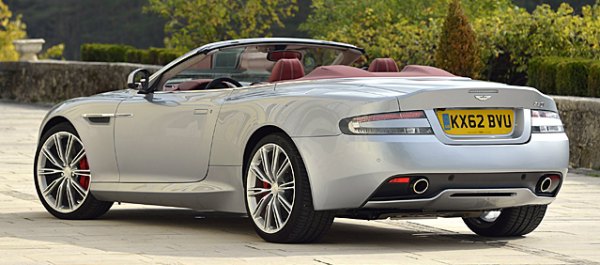 |
Being more relaxing and more refined to drive than the
Vanquish, I would say the DB9 is the better Aston Martin. It
understands what took the DB4 and DB5 to classic status and what
distinguishes the British marque from Ferrari. In addition to the lower
cost and prettier appearance, it is definitely the most sensible Aston
Martin at the moment. |
Verdict:     |
| Published
on 16
Sep
2015 |
All rights reserved.
|
|
DB9 GT
|
|
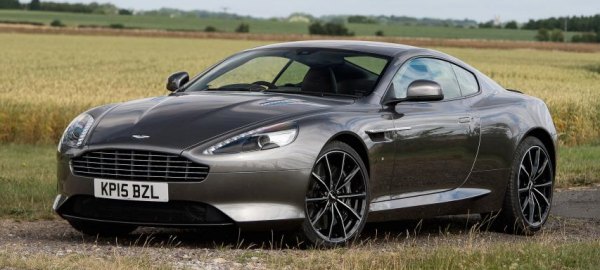
|
Although
it was introduced just 3 years ago, the current DB9 was evolved from
Virage which was in turn modified from the first series DB9. This means
most of its underpinnings are already 12 years old. Aston Martin has
started developing its successor DB11. Before that car arrives, the DB9
is given the last update, which is this DB9 GT.
The first sight of DB9 GT is not very promising. The “GT” badge at its
tail looks like added as an afterthought. Apart from that badge, it is
difficult to tell the differences from the standard car. Aston said
there are now black painted front splitter and rear diffuser, reshaped
headlamps and taillights as well as new 10-spoke wheels, but frankly
only an existing owner of DB9 may be able to tell. Mechanical
modifications are equally subtle. The 5935 c.c. V12 has been tuned to
produce another 30 horsepower (now tops at 547 hp) but it is still less
powerful than the versions on other Astons. No wonder the manufacturer
quotes of 0-60 mph is improved by merely a tenth to 4.3 seconds. The
183 mph top speed is even unchanged, because it is limited by the
gearing of the outdated 6-speed auto. Yes, Aston doesn’t upgrade it to
the new 8-speeder as the investment is not justified for the final
edition.
As a result, the improvement to powertrain feels very limited. The
naturally aspirated V12 still sounds great on song and spins smoothly
all the time, but the performance it offers is no match for rivals like
Mercedes-AMG S63 coupe or Bentley Continental GT. The 6-speed gearbox
is a bit slow to react by today’s standard. What the DB9 excels is
chassis. Its VH platform is a thoroughbred sports car basis, with good
inherent balance, nice body control and meaty yet communicative
hydraulic steering. Aston did nothing to the chassis this time around,
but it doesn’t need to. It’s no 911 Turbo or AMG GT-agile, but it feels
like a sports car beside the big Bentley and S-class coupe. Admittedly,
it doesn’t ride as smoothly or isolate from the outside world as good
as those rivals.
The cabin remains as cramped as ever – no kids would be happy to slip
into those tiny rear seats, while the front doesn’t have a lot of
headroom either. However, at least the GT has replaced its aging center
console and ancient infotainment system with the touch panel of
Vanquish. That’s perhaps the biggest single improvement of the car.
Ridiculously, the DB9 GT is no better to drive than the standard
version, but it is a bit more convenient to use.
|
Verdict:    |
|
|
|
|
|
|
|
|
|
|
DB9
|
2004
|
| Front-engined,
RWD |
Aluminum spaceframe
|
Aluminum, composites
|
| 4697 / 1875 / 1318 mm |
| 2740 mm |
V12, 60-degree
|
| 5935 cc |
DOHC 48 valves
|
| - |
| - |
450 hp
|
420 lbft
|
6-spd manual (6-spd auto)
|
All double-wishbones
|
-
|
F: 235/40ZR19
R: 275/35ZR19 |
1710 kg (1760 kg)
|
183 mph (c) (190 mph***)
|
4.6* (4.8* / 4.5**)
|
10.2* (10.1* / 10.3**)
|
|
DB9 Mk2
|
2012
|
| Front-engined,
RWD |
Aluminum spaceframe
|
| Aluminum, composites |
| 4720 / 1912 / 1282 mm |
| 2740 mm |
V12, 60-degree
|
| 5935 cc |
DOHC 48 valves, DVVT
|
| - |
| - |
517 hp / 6500 rpm
|
457 lbft / 5500 rpm
|
6-speed automatic
|
All double-wishbones
|
Adaptive damping
|
F: 245/35ZR20
R: 295/30ZR20 |
1785 kg
|
| 183 mph (c) |
4.4 (c)
|
| - |
|
DB9 GT
|
2015
|
| Front-engined,
RWD |
Aluminum spaceframe
|
| Aluminum, composites |
| 4720 / 1912 / 1282 mm |
| 2740 mm |
V12, 60-degree
|
| 5935 cc |
DOHC 48 valves, DVVT
|
| - |
| - |
547 hp / 6750 rpm
|
457 lbft / 5500 rpm
|
6-speed automatic
|
All double-wishbones
|
Adaptive damping
|
F: 245/35ZR20
R: 295/30ZR20 |
1785 kg
|
| 183 mph (c) |
4.3 (c)
|
| - |
|
|
|
|
|
Performance
tested by: *Autocar, **C&D, ***AMS
|
|
|
|
|
|
|
|
|
Copyright©
1997-2015
by Mark Wan @ AutoZine
|
|